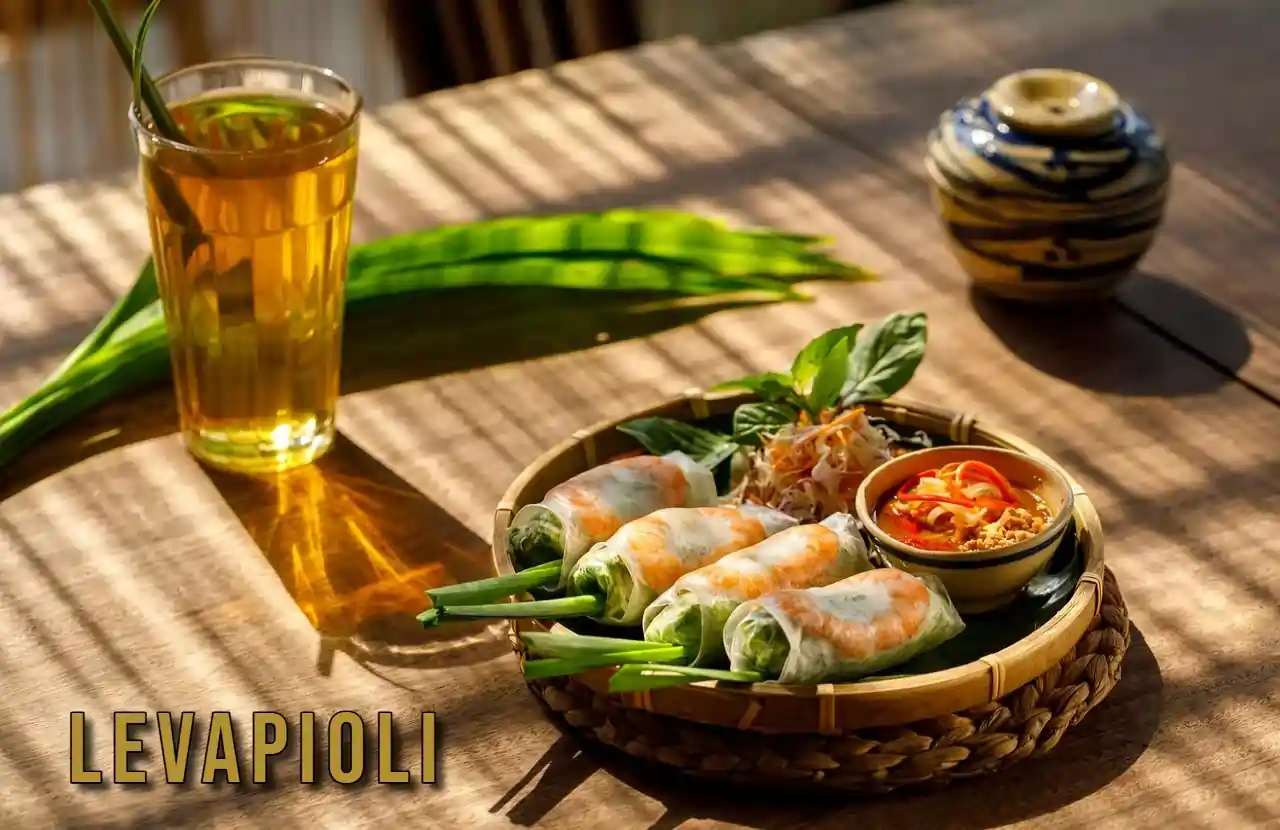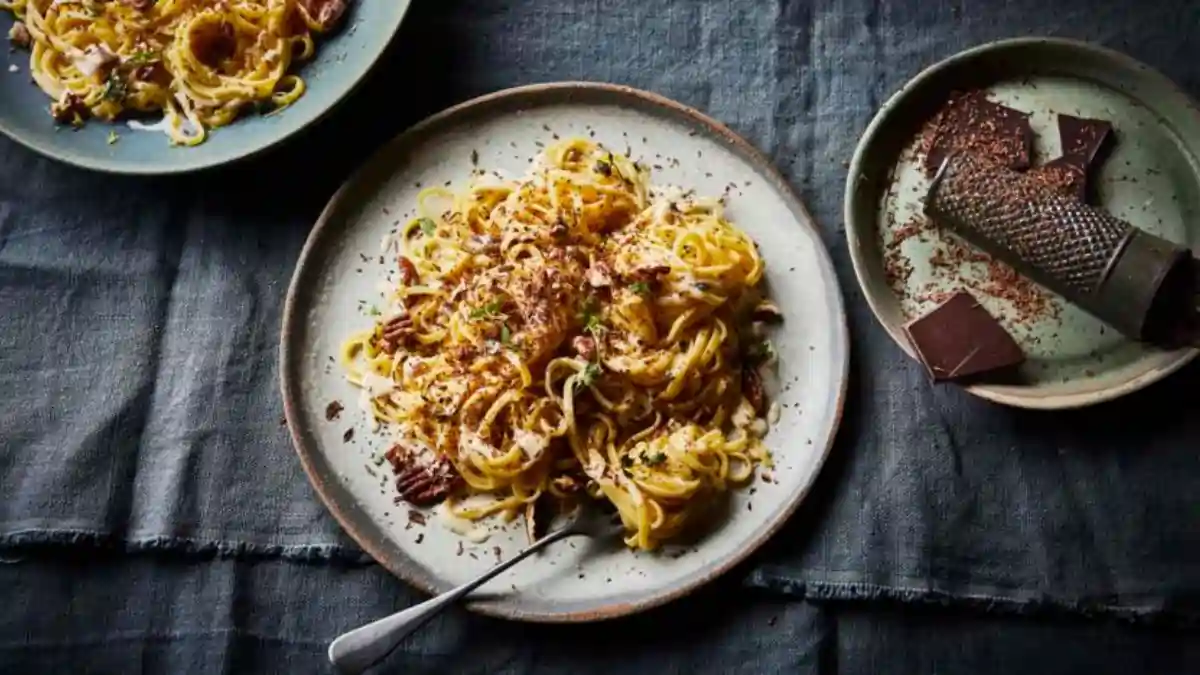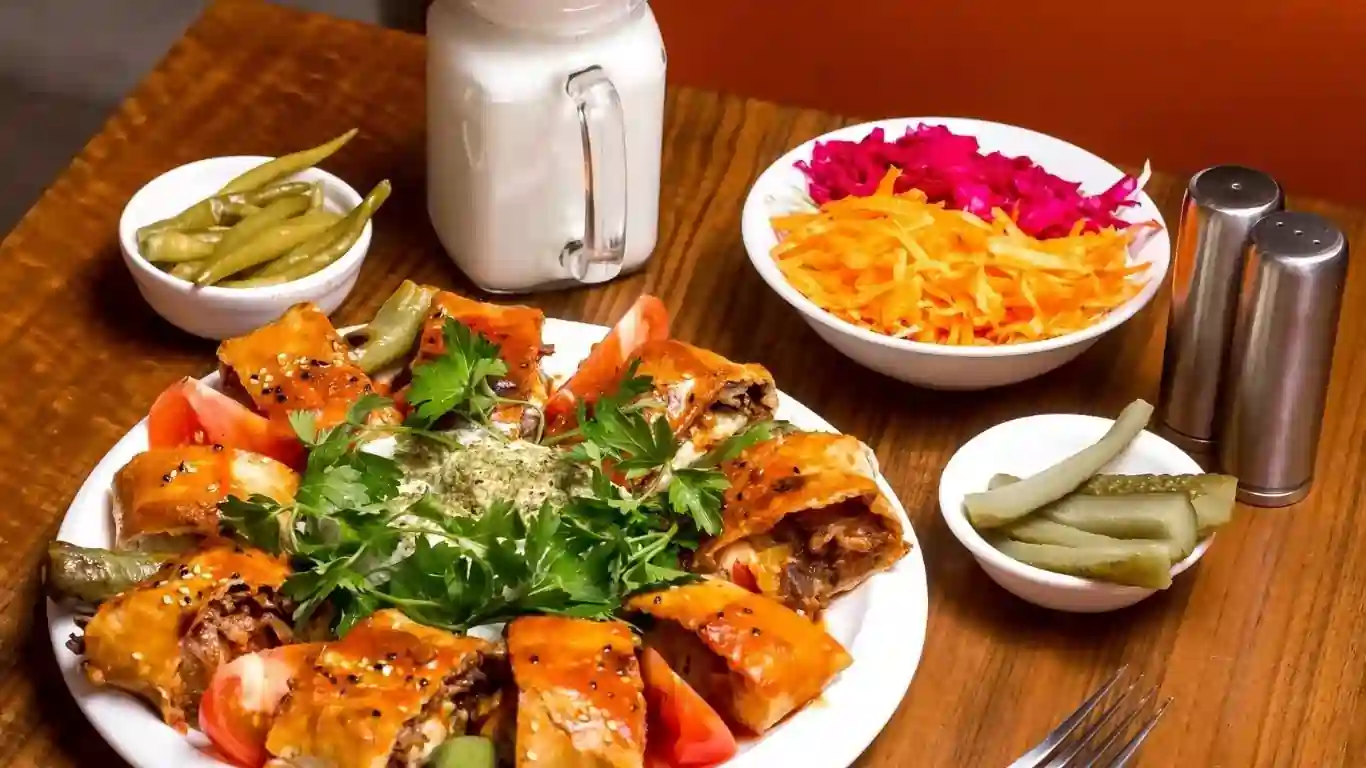Introduction
Biscotti di Prato, known worldwide as biscotti, are traditional almond cookies from the Tuscan city of Prato in Italy. The name means “biscuits of Prato,” and these golden, crunchy treats are now a part of both Italian tradition and global dessert culture. While the word “biscotti” in Italian means “cookies” in general, outside Italy it usually refers to these long, nut-filled biscuits baked twice to make them firm and long-lasting.
Unlike soft cookies, biscotti are dry, crisp, and made to be enjoyed with coffee, tea, or sweet wine. Their almond taste and crunch have made them popular in homes, cafés, and fine dining places all around the world.
Historical Origins – From Prato to the World
The story of biscotti di Prato begins in medieval Tuscany, especially in the busy city of Prato. As early as the 14th century, bakers discovered that baking dough twice produced a dry, substantial snack that could last a long time, making it perfect for travel, trade, and storage. At first, they were baked this way out of necessity, but soon they became a favourite for daily life and special events.
In the 19th century, their place in history was sealed when Antonio Mattei, a famous baker from Prato, created the modern recipe. His version used whole almonds with their skins and left out fats like butter.
His biscotti became so famous that they are still sold in blue paper wrapping from his bakery today. As Italians moved to other countries, they carried this recipe with them, spreading biscotti not only in Tuscany but also across Europe, North America, and beyond.
There’s plenty more to explore check out our other posts!
Traditional Recipe – The Original Biscuit of Prato
Core Ingredients
The charm of biscotti di Prato lies in its simple recipe. The main ingredients are flour, sugar, eggs, and whole almonds (often unpeeled for a rustic look). Some recipes also add pine nuts or lemon zest, but the original keeps it plain. Importantly, there is no butter, oil, or baking powder in the classic version. This makes them naturally low in fat and gives them their dry crunch.
Step-by-Step Instructions
To make authentic biscotti di Prato at home, whisk eggs and sugar until light and fluffy. Slowly add flour and a pinch of salt to form a thick dough. Mix in toasted whole almonds evenly. Shape the dough into flat logs and place on a baking tray lined with parchment.
Bake at 180°C (350°F) for about 25 minutes, until golden and firm. Let them cool slightly, then cut diagonally into thick slices with a serrated knife. Place the slices cut-side down and bake again at a lower temperature for 10–15 minutes on each side. This second bake removes moisture, giving biscotti their classic dry, crunchy texture that lasts for weeks.
The Double-Bake Biscotti’s Signature Method
The key feature of biscotti is the double bake. The first bake sets the dough, while the second removes moisture, creating a biscuit that is firm, crunchy, and won’t spoil quickly. This gives biscotti their famous snap and long shelf life. Their dry texture also makes them perfect for dipping into Vin Santo, espresso, or tea. When dropped, the biscuit softens slightly, releasing the rich almond flavours. The double bake is not just a method, but it is a symbol of Tuscan baking skill and tradition.
Taste, Texture, and Aroma
Biscotti di Prato have a light sweetness with a strong roasted almond flavour. Since there is no butter or oil, the natural taste of eggs and flour shines through. Additions like lemon zest or anise add an extra aroma to the dish with simplicity. The texture is crunchy but not too hard, making them perfect for dipping. Freshly baked, they release the warm smell of almonds and dough, reminding one of cosy Italian kitchens.
Variations on the Classic
Traditional Twists
While the almond version is the classic, some Tuscan bakers add pine nuts, anise seeds, or citrus zest to their recipes. These small changes keep the biscuits true to tradition while adding subtle differences in taste.
Modern Innovations
Today, biscotti come in many creative forms. Chocolate-dipped biscotti are popular in cafés, while pistachios, hazelnuts, and dried fruits like cranberries or apricots are also used. Vegan versions replace eggs with flaxseed or aquafaba, and gluten-free ones use rice or almond flour. Health-friendly versions use honey or natural sweeteners. Despite these changes, they still keep the dry crunch that makes biscotti special.
Biscotti in Italian Culture
In Italy, biscotti di Prato are more than just cookies; they are a symbol of tradition, hospitality, and celebration. In Tuscany, it is common to serve them with Vin Santo after meals, especially on Sundays, weddings, and holidays. The famous Mattei bakery in Prato, with its blue wrapping, is a cultural landmark. Biscotti even appear in books, films, and art as a sign of Italian warmth and togetherness.
Global Popularity – From Prato to the World
With globalisation and the rise of coffee culture, biscotti became popular worldwide, especially in America during the 1990s café boom. Their long shelf life and perfect match with coffee made them a café favourite. Today, they are sold everywhere from supermarkets to online stores and often marketed as luxury or artisanal goods. Countries like the U.S., France, and Japan now make their own versions while keeping the original spirit.
Health Benefits and Nutrition
Compared to cakes or creamy desserts, biscotti are lighter and healthier. With no butter or oil, they are low in fat, and the almonds add protein, fibre, and Vitamin E. A couple of pieces make a filling snack with relatively few calories. Health-focused versions reduce sugar or use natural sweeteners, making them suitable for people with diabetes or fitness lovers.
Pairing Suggestions – Best Drinks with Biscotti
Traditionally, biscotti are paired with Vin Santo, a sweet Tuscan dessert wine. But they also go well with espresso, cappuccino, or black tea. Coffee balances its sweetness, while tea brings out its nuttiness. Adventurous pairings include dessert liqueurs, cider, or even ice cream for a modern twist.
Baking at Home
Making biscotti at home is easy and rewarding. With basic ingredients, a tray, and a serrated knife, you can prepare them quickly. After the double bake, store them in airtight jars for freshness. For freezing, please keep them in sealed bags and thaw before serving. To avoid breaking when cutting, let the logs cool slightly and use gentle strokes. Baking at home also enables you to customise the recipe to your taste.
Biscotti in Business and Marketing
Biscotti are now a symbol of quality and craftsmanship in bakeries and cafés. Their Tuscan roots make them popular as gifts in elegant packaging. In 2025, brands highlight sustainable packaging, gluten-free options, and organic ingredients. Online sales and partnerships with coffee and wine brands help expand their reach. Biscotti stand out as both an everyday snack and a luxury product.
Cultural Identity and Tourism
For visitors to Tuscany, tasting authentic biscotti di Prato is a must. Bakeries in Prato offer tastings, tours, and classes for tourists. These experiences connect travellers with Italian culture and history. Culinary tourism has turned biscotti into an ambassador of Tuscany, carrying the region’s story worldwide.
Modern Culinary Uses
Biscotti are no longer just stand-alone treats. Chefs now use them in creative desserts, layering them in tiramisu, crumbing them on cheesecakes, or serving them with gelato. Their versatility and crunch make them perfect for modern fine dining.
Challenges and Authenticity
With their global fame, some commercial biscotti lose authenticity by adding fats or making them soft. To protect the authentic tradition, Italian bakers and food groups promote original recipes using the twice-baked, fat-free method. Certifications and food movements, such as “Slow Food,” aim to keep biscotti true to their roots.
Future of Biscotti di Prato
In the future, biscotti will continue to evolve with gluten-free, organic, and allergy-friendly versions. Social media and food influencers are already bringing new recipes to younger generations. By 2030, biscotti will likely remain both a traditional and modern favourite.
Want to learn more? Our full collection of posts is ready for you!
Conclusion
Biscotti di Prato are more than just cookies; they are a story of Tuscan history, Italian taste, and cultural pride. From medieval kitchens to modern cafés, they have carried tradition, comfort, and flavour across centuries and countries. Whether dipped in Vin Santo in Tuscany or enjoyed with coffee in New York, biscotti continue to bring people together one crunchy bite at a time.
FAQs About Biscotti di Prato
What is biscotti di Prato?
It is a twice-baked Italian almond biscuit from Prato, Tuscany.
Why is it baked twice?
To make it dry, crunchy, and long-lasting.
How is it traditionally eaten?
By dipping it in Vin Santo wine, but also with coffee or tea.
Can I make it at home?
Yes, with flour, sugar, eggs, and almonds. Bake twice for the signature crunch.
Is biscotti a healthy dessert?
Yes, compared to creamy desserts. It has no butter or oil and contains protein-rich almonds.




